Earlier this morning, Microsoft and Nokia staged a joint event to announce their forthcoming Windows Phone 8 flagship in the Lumia 820 and 920 smartphones. Both phones will be released later this year with the old saw of being made initially available “in select markets” which means very little to the majority of people that will read this. The phones themselves are an evolution of the previous Lumia 800 and 900 with the following specifications:
Display: 4.5 inch Nokia PureMotion HD+ WXGA IPS LCD, Super Sensitive touch, Nokia ClearBlack with high brightness mode and Sunlight Readability Enhancements
Battery: 2000mAh with integrated Qi wireless charging
Processor: 1.5GHz Dual Core Snapdragon S4
Main Camera:8.7MP with Nokia PureView advanced optical imaging stabilization and Carl Zeiss optics
Full 1080p HD video capture at 30fps
Front facing camera: 1.2MP with 720p HD video
Memory: 1GB RAM, 32GB mass memory with 7GB free SkyDrive storage
Of note on the 920 is the fact that it does not include a memory card slot, despite being supported by the revised specifications in the new Chassis requirements and being included in the lower spec 820 behind the battery cover. When asked why the 920 excludes the slot while being included on the 820, Nokia reps alluded to aesthetics being given priority over the additional utility of additional storage with the following paraphrased statement:
‘To put an SD card slot in it would have defiled it.’ He said most people don’t use the storage in their phone, although the Nokia Lumia 820, which has only 8GB of storage, does include a micro-SD card slot behind its removable cover, which Shields claims doesn’t compromise the design.”
Already we can see that Nokia’s flagship is demonstrating poor design decisions in the name of parity against Apple, when it should be doing everything it can to differentiate the series from the smartphone in order to draw in the new customers it so sorely needs to justify its bet on Windows Phone, a bet that continues to struggle in the face of middling sales. While the 820 hews closer to the new Chassis specifications with the included microSD slot, that model is still being positioned as the midrange model with the following specifications:
Display: 4.3 inch ClearBlack OLED WVGA 800×480; Super Sensitive touch; Nokia ClearBlack with high brightness mode and Sunlight Readability Enhancements
Battery: 1650mAh with support for Qi wireless charging
Processor: 1.5GHz Dual Core Snapdragon S4
Camera: 8MP Auto Focus with Carl Zeiss optics; Dual LED flash; Full HD 1080p video capture at 30fps
Front camera: VGA
RAM: 1GB RAM
Storage: 8GB mass memory with microSD memory card support and 7GB free SkyDrive storage
Now, the key differences from the iPhone that are supposed to draw people toawrds the new Lumia series is the addition of wireless charging developed by Qi (developers of the Qi wireless charging pad) for both the 820 and 920 in an attempt to increase the viability of wireless charging as a standard feature going forward, even going as far as developing a custom “charging pillow” as an optional accessory.
Whether the inclusion of wireless charging will make any difference isn’t the question so much as the fact that its being included to begin with, as the last commercially available phones to incorporate such technology were the Palm Pre series along with the HP TouchPad, with people paying little attention and merely regarding it as additional fluff instead of the tech driving further development in the area.
Of course the other key feature of the newly updated Lumia series is the addition of the PureView imaging technology found on the Nokia 808, with one major caveat: The main cameras on the 820 and 920 are not using PureView sampling technology at all and are merely being branded as PureView cameras in order to push an unrelated technology in optical image stabilization.
While the use of the PureView branding shouldn’t be a surprise, that fact that it is being applied to optical image stabilization instead of image oversampling is a big misnomer and should be treated as such, since the 820 and 920 feature electronically controlled stabilization assembles for video capture, while the much larger camera assembly in the 808 PureView featured no such electronic assemblies for image oversampling or video capture and instead relied on both the GPU, built-in imaging software and oversized image sensor to capture images and video without the need for electronic assemblies.
In addition Nokia was initially caught misrepresenting the capabilities of its PureView branded camera assemblies when it initially posted comparison videos of video captured with a competitors phone side by side with what was initially thought to be a prototype of the Lumia 920, before closer inspection of the video revealed that the video it labeled as taken with the PureView camera was in fact captured with a much larger digital film rig with no disclaimer stating as such. Nokia has since clarified its intentions with the original video, but the damage has already been done in terms of its reputation, and has gone as far as posting a new short video demonstrating a prototype Lumia 920 with the tech, but the results are a reflection of its current prototype status.
Of course, the biggest issue facing the new Lumia series isn’t even the misrepresentation of its PureView camera tech on the phones, but the lack of firm pricing and release details. With the new iPhone being announced next week and subsequently being released on the 21st in multiple international territories, any advantage in being first to announce products ahead of Apple has already evaporated with no chance to recover, especially as no US carriers were even announced during this morning’s presentation.
To add further insult to injury, new rumors also suggest that device development is running behind schedule and may lead to the phones being delayed to the end of the calendar year, making things even harder for Nokia and Microsoft, which have put everything into the new Lumia line as the flagship for Windows Phone 8.
The reaction to the announcement may be the biggest sign that Nokia’s decision to go all in on Windows Phone was a bad bet, as investors sent the stock price further downward in international trading shortly after the announcement, precisely when the announcement was supposed to reassure investors, not push them even further away from the ailing company. With no confirmed pricing and US launch details, can anyone really be blamed for not taking the plunge on the new Lumia series when it does eventually launch?
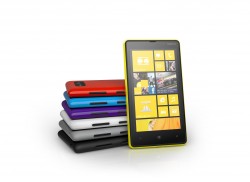
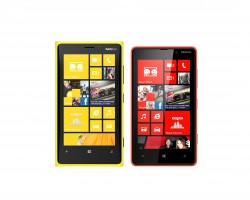
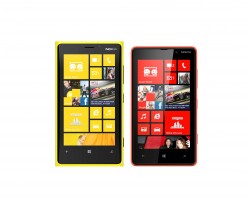
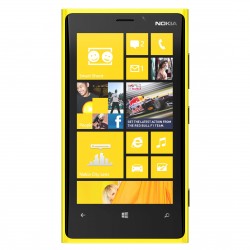
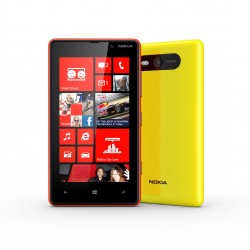
“[Nokia] has gone as far as posting a new short video demonstrating a prototype Lumia 920 with the tech, but the results are a reflection of its current prototype status.”
Following this report, Nokia has since admitted that the video shot is a simulation, not actually captured from any prototype Nokia Windows Phone.